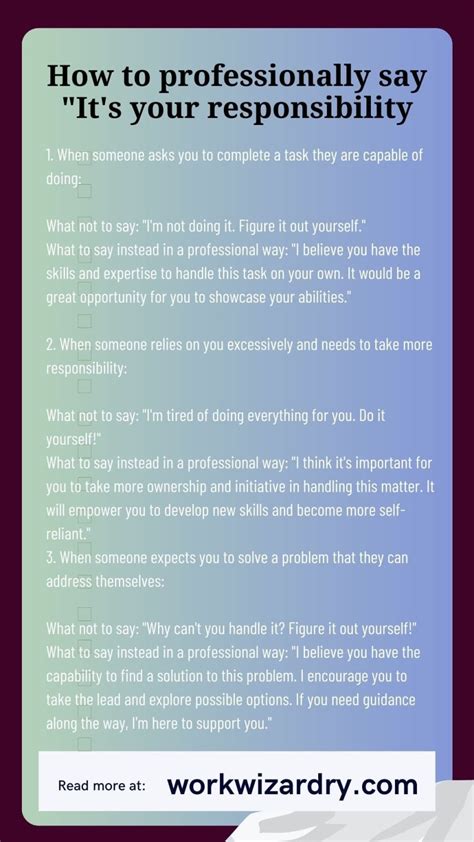How to Professionally Say Anything: A Guide to Polished Communication
In today's professional world, how you say something is just as important as what you say. This guide will help you elevate your communication, no matter the context. Mastering the art of professional phrasing can significantly impact your career trajectory, building trust and credibility with colleagues, clients, and superiors.
Understanding the Context:
Before diving into specific phrases, consider the context. Your approach will differ depending on who you're addressing (a superior, peer, or subordinate), the setting (formal meeting, informal email), and the message itself (positive feedback, negative feedback, a request).
Key Principles for Professional Communication:
- Clarity and Conciseness: Avoid jargon, ambiguity, and overly long sentences. Get straight to the point.
- Respectful Tone: Maintain a polite and courteous tone, even when delivering critical feedback.
- Positive Language: Frame your message positively whenever possible, focusing on solutions and opportunities.
- Active Voice: Use active voice instead of passive voice for stronger, clearer communication. ("I completed the report" instead of "The report was completed by me").
- Proofreading: Always proofread your communication before sending it. Typos and grammatical errors undermine professionalism.
Phrasing Strategies for Different Situations:
1. Giving Feedback:
- Positive Feedback: Instead of "Your work is good," try: "Your attention to detail on this project was exceptional. The results exceeded expectations."
- Constructive Criticism: Avoid accusatory language. Instead of "You made a mistake," try: "I noticed a minor discrepancy in [specific area]. Here's a suggestion to improve it for next time."
- Addressing Performance Issues: Instead of "Your performance is unacceptable," try: "I've noticed some challenges in [specific area]. Let's discuss strategies to improve your performance in this area."
2. Making Requests:
- Instead of: "Can you do this for me?"
- Try: "Would you be available to assist with [task] by [deadline]?" Or, "I'd appreciate your help with [task]." This shows respect and provides context.
3. Saying "No" Professionally:
- Instead of: "No."
- Try: "Thank you for the offer. Unfortunately, my current workload prevents me from taking on additional responsibilities at this time." Or, "I appreciate the opportunity, but I'm not able to commit to this project due to [reason]." Always offer an alternative if possible.
4. Handling Difficult Conversations:
- Prepare: Outline key points and desired outcomes before the conversation.
- Active Listening: Pay attention to the other person's perspective.
- Empathy: Try to understand their viewpoint, even if you don't agree.
- Focus on Solutions: Work towards a mutually acceptable resolution.
5. Networking and Introductions:
- Instead of a simple "Hi," try: "It's a pleasure to meet you, [Name]. I'm [Your Name], and I'm a [Your Title] at [Your Company]." Be prepared with a concise and engaging introduction about yourself and your work.
Mastering Professional Communication is an Ongoing Process:
Continuous improvement is key. Pay attention to how others communicate effectively, and seek feedback on your own communication style. By practicing these strategies, you'll significantly enhance your professional image and build stronger relationships. Remember, effective communication is a valuable asset in any professional setting.
